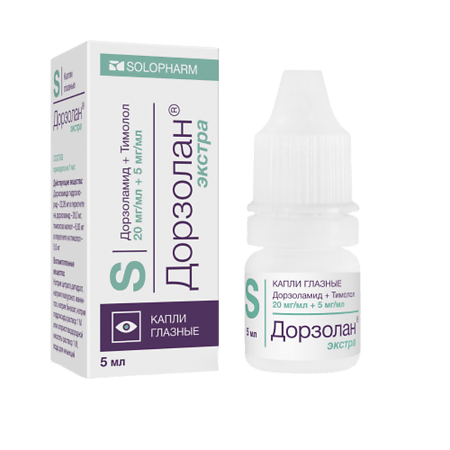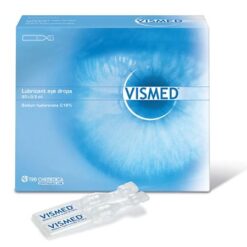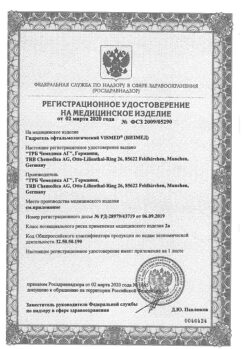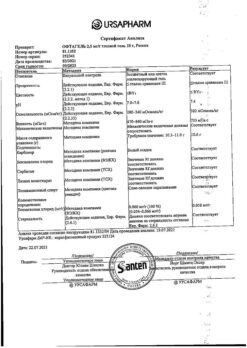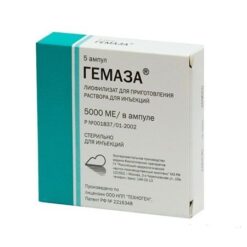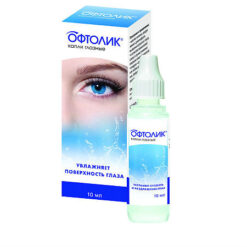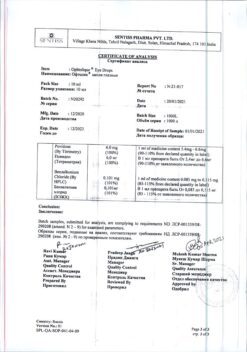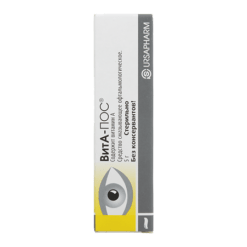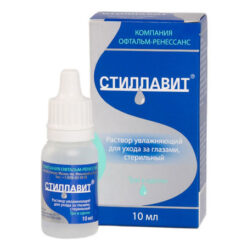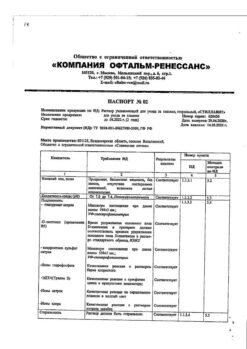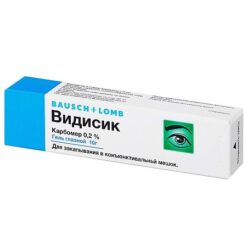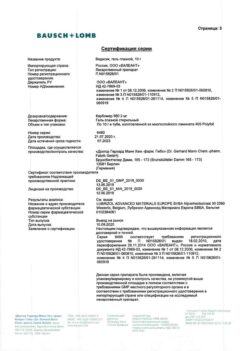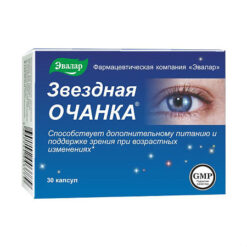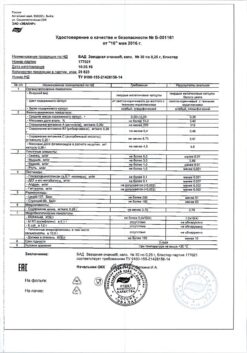No products in the cart.
Dorzolan extra, eye drops 20 mg/ml+5 mg/ml 5 ml
€1.00
Out of stock
(E-mail when Stock is available)
Description
A combined antiglaucoma agent.
Dorzolamide is a selective type II carbohydrase inhibitor. Inhibition of ciliary body carboanhydrase leads to a decrease in intraocular fluid secretion, presumably by reducing the formation of hydrocarbonate ions, which in turn leads to slower transport of sodium and intraocular fluid.
Timolol is a non-selective beta-adrenoblocker. Although the exact mechanism of action of timolol in reducing intraocular pressure has not yet been established, several studies have shown a preferential reduction in intraocular fluid formation as well as a slight increase in its outflow.
The combined action of these substances in a combination drug leads to a more pronounced decrease in intraocular pressure.
The decrease in intraocular pressure comes 20 minutes after instillation and reaches a maximum after 2 hours and lasts for at least 24 hours.
.
Indications
Indications
Active ingredient
Active ingredient
How to take, the dosage
How to take, the dosage
For topical use. Put 1 drop in the conjunctival sac of the eye (or both eyes) 2 times a day.
If used together with other topical ophthalmic drugs, the drug Dorzopt Plus should be administered at 10-minute intervals.
In case of nasolacrimal occlusion (closing the eyelids) for 2 min after injection, the drug reduces its systemic absorption which may lead to increased local action.
The duration of treatment is determined by the physician depending on the clinical condition of the patient.
Interaction
Interaction
There is a possibility of enhancing the hypotensive effect and/or development of marked bradycardia when using timolol ophthalmic solution together with slow calcium channel blockers, sympatholytics, beta-adrenoblockers, antiarrhythmic drugs (including amiodarone), cardiac glycosides, parasympathomimetics, opioid analgesics and MAO inhibitors.
Systemic beta-adrenoblockers may increase the effect of hypoglycemic drugs.
Systemic beta-adrenoblockers may increase the severity of arterial hypertension, which is an effect of clonidine withdrawal.
There have been isolated data on the development of mydriasis when using timolol and adrenaline together.
There is a possibility of increased, known systemic effects of carboanhydrase inhibition when combining the use of local and systemic carboanhydrase inhibitors.
Special Instructions
Special Instructions
Components of the combined medicine may penetrate into the systemic bloodstream. Since timolol is a beta-adrenoblocker, adverse reactions developing with the systemic use of beta-adrenoblockers may occur with local administration of this combination.
Inadequate monitoring of the cardiovascular system should be ensured before initiating use.
Patients with a history of cardiovascular disease, including heart failure, should be closely monitored for signs of worsening of these conditions (heart rate and BP control).
There have been reports of cases of fatal heart failure with fatal outcome against the background of the use of timolol in the form of eye drops.
If the first signs or symptoms of heart failure appear, the use of this drug should be discontinued.
Patients with grade I heart block should be prescribed beta-adrenoblockers with caution due to their ability to slow impulse conduction.
There have been reports of fatal bronchospasm in patients with bronchial asthma when using timolol in eye drops.
In patients with mild to moderate COPD, t use with caution and only if the anticipated benefit of treatment exceeds the potential risk.
The drug should be used with caution in patients with severe peripheral circulatory disorders (severe forms of Raynaud’s disease or syndrome).
Use with caution in patients with spontaneous hypoglycemia or in patients with diabetes mellitus (especially with a labile course) while using insulin or oral hypoglycemic agents because beta-adrenoblockers may mask the symptoms of hypoglycemia.
Beta-adrenoblockers may mask some clinical signs of hyperthyroidism (e.g., tachycardia). Patients should be closely monitored if hyperthyroidism is suspected. Abrupt withdrawal of beta-adrenoblockers should be avoided because of the risk of thyrotoxic crisis.
Dorzolamide is a sulfonamide. Adverse reactions that have been identified with systemic use of sulfonamides may be noted with topical use (Stevens-Johnson syndrome and toxic epidermal necrolysis). In case of signs of serious hypersensitivity reactions the use of the drug should be discontinued.
When treating with beta-adrenoblockers patients with atopy or severe anaphylactic reactions to various allergens in the anamnesis there may be an increase in response if there is repeated contact with these allergens. In this group of patients the use of epinephrine in a standard therapeutic dose to stop allergic reactions may not be effective.
When used in patients taking systemic beta-adrenoblockers, possible mutual enhancement of pharmacological effects of the drugs with respect to both the known systemic effects of beta-adrenoblockers and decrease in intraocular pressure should be considered. Co-administration with other beta-adrenoblockers is not recommended.
If the topical use of timolol has to be withdrawn, as in the case of withdrawal of systemic beta-adrenal blockers, discontinuation of therapy in patients with CHD should be done gradually.
The beta-adrenoblockers used in ophthalmology may cause dryness of the ocular mucosa. In patients with corneal disorders the drug should be used with caution. In patients with low endothelial cell number there is an increased risk of corneal edema.
The use of systemic carboenhydrase inhibitors may lead to impaired acid-base balance and may be accompanied by urolithiasis, especially in patients with a history of urolithiasis.
Impact on driving and operating machinery
When using the drug it is necessary to refrain from driving vehicles and operating machinery and engaging in potentially dangerous activities requiring increased concentration and quick psychomotor reactions.
Contraindications
Contraindications
With caution
Cardiovascular diseases in anamnesis, including heart failure, AV-blockade of degree I; mild to moderate COPD; severe peripheral circulatory disorders (severe forms of Raynaud’s disease or Raynaud’s syndrome); hepatic insufficiency; diabetes; urolithiasis (including anamnesis).(including in anamnesis); hyperthyroidism; corneal disorders; elderly patients.
.
Side effects
Side effects
Similarities
Similarities
Additional information
| Manufacturer | Grotex Ltd, Russia |
|---|---|
| Medication form | eye drops |
| Brand | Grotex Ltd |
Related products
Buy Dorzolan extra, eye drops 20 mg/ml+5 mg/ml 5 ml with delivery to USA, UK, Europe and over 120 other countries.

